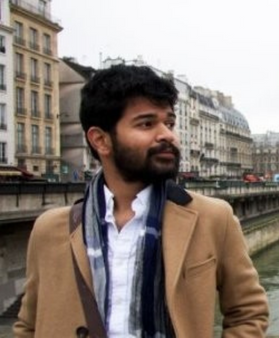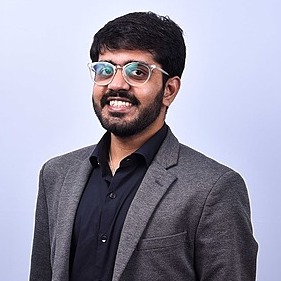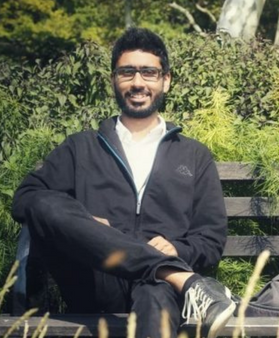Cinematic VR Course at NYFA
In the 8-Week Cinematic VR Workshop, aspiring visual artists establish storytelling techniques to design and direct VR content. Designed for students who want a hands-on introduction to virtual reality production, NYFA’s Cinematic VR workshop provides an in-depth introduction to topics including screenwriting for VR, directing the actors and audience in 360, multi-lens cinematography, production design, VR post production, spatialized audio recording and mixing, immersive design, and user experience design.
Workshop DescriptionWorkshop Name: 8-Week Cinematic VR Workshop
In this hands-on workshop, students learn fundamental VR concepts and create their own virtual reality content. Throughout the program, students study early VR content, live theater, amusement parks, video games, and other interactive/immersive experiences, then apply the techniques to their original projects. Students are also introduced to industry tools and software, working with 360 camera rigs, lighting, spatialized sound, and multiple post-production platforms. They also learn to direct actors and voice-over talent.
To support the core narrative VR curriculum, students gather industry insights from demos by VR tech innovators, as well as guest lectures by content producers across retail, documentary, music, games, filmmaking, and beyond. No prior experience is required to enroll. Projects, equipment, and curriculum are subject to change.
Students should come equipped with a 1TB external drive to save their work, and are invited to bring their own headset for viewing content. All other equipment is provided.
NYFA also offers the possibility to learn filmmaking from anywhere through a variety of online filmmaking workshops.
To learn more about this program, refer to NYFA’s Course Catalog or request more information.
Class Details
Immersive Design
This course is designed to teach each student the necessary skills to safely and functionally prepare, shoot and produce 360° video content. Immersive Design is aimed at instructing students best practices for effective immersive design to avoid simulator sickness and achieve creative goals in direction throughout a spherical video. In addition to practical application and review of case studies in class, students will be required to complete multiple 360° video projects to apply new 600 techniques and to demonstrate their mastery of topics presented. A sizeable portion of the class will focus on techniques for pre-visualization and prototyping.
Director’s Craft
This course is the backbone of the virtual reality (VR) curriculum and introduces students to the language and craft of film directing as it applies to virtual reality filming in 360°. Director’s Craft prepares students for the VR course projects and is the venue for screening and critiquing their work throughout the course. Instructors challenge students to find the most effective and expressive visual means to tell their stories in a virtual reality space.
Tech Essentials
In Tech Essentials students take hands-on classes learning two different VR motion picture camera systems. Students learn how to operate the cameras and perform test shoots to learn about: 360° views and dynamics, exposure, lens theory, and depth of field. Filming 360 degrees presents particular problems when it comes to lighting because the camera sees everything. As a result, while teaching the fundamentals of traditional lighting, this course focuses on guerilla lighting techniques — the use of available light and practicals (lamps and ceiling fixtures). Students learn how to support the mood of the story with lighting and experiment with expressive lighting styles.
Screenwriting
Telling a story in the VR world is a very different journey than telling a story in the 2D medium and requires precise techniques to guide the viewer through the experience. This course is designed to help students develop their scripts with this new technique in mind. The fundamentals of visual storytelling are focused upon as they relate to VR. Students receive constructive analysis and support as they take a story from initial idea, through treatment, step-outline, rough draft, and finally, a shooting script. UX UX is the study of user satisfaction with an experience. In the UX classes the students will learn best practices and industry standards aimed at improving the usability, accessibility, and pleasure provided in the interaction with the experience, thus creating more accessible and successful work. UX includes human centric design using social and biological sciences to optimize interactions between people and technology.
UX
UX is the study of user satisfaction with an experience. In the UX classes the students will learn best practices and industry standards aimed at improving the usability, accessibility, and pleasure provided in the interaction with the experience, thus creating more accessible and successful work. UX includes human centric design using social and biological sciences to optimize interactions between people and technology.
Post Production
Editing is an art unto itself. Regardless of the editing system a filmmaker uses, it is the editor’s ability to work with the shots and tell a story that makes all the difference. Students learn how to use various different digital editing systems to stitch their projects together. Students are taught the fundamental concepts of 360° film editing, both practical and aesthetic. Classes consist of lectures that combine technical information and demonstration. Each student edits his or her own films and can supplement classes with individual consultations at the editing station.
Production Workshop
Production Workshop is designed to demystify the craft of virtual reality storytelling. In this hands-on class, students stage and shoot exercises under the supervision of the directing and cinematography instructors. The guiding idea is that once students can articulate the objective of a given scene, the necessary craft and techniques will follow. The technical aspects of filmmaking are seen as tools to realize the story. Through the in-class exercises, the rules and tools of mise-en-scene and continuity are defined and practiced, and are applied to the use of lenses, lighting, performance, and editing.
Sound Design
This is a comprehensive course that details the process of recording ambisonic audio on set and posting fully spatialized sound. It provides concepts, technical information, and hands-on demonstration. Students are introduced to various types of recording devices and taught when to use them. The course challenges the students to use sound as an additional tool for storytelling, and takes them through the complete recording process.
TIMES AND BREAKDOWN BY WEEK
These are intensive, full-time Monday through Friday programs that typically run in three x 3hr sessions from 9 AM-6:30 PM. There are breaks in between sessions. Depending on the workshop, there may be shoots held on the weekend. Students will need to anticipate extra time outside of class to complete assignments, projects, and exercises. Daily class times may vary. Request information to learn more.
PROGRAM AND SOFTWARE REQUIREMENTS
This course requires the following software and equipment:
- External hard drive (costs $30-$200)
- An SD Card
NYFA’s 8-Week workshop is available on a recurring basis. Please visit the “Dates” link to check availability at NYFA locations.
The end goal of the program is for students to create an original piece of VR content, which they can execute using any of the tools at their disposal. To learn more about the projects, visit our projects page.
Please note: Equipment, curriculum, and projects are subject to change and may vary depending on location. Students should consult the most recently published campus catalog for the most up-to-date curriculum.



